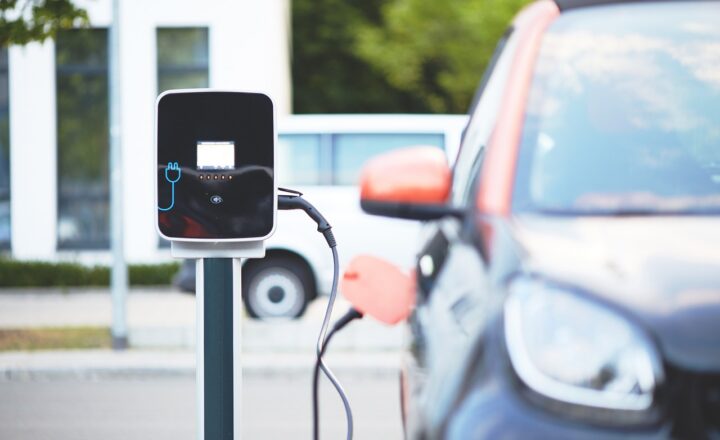Why EVs Are Expected to Dominate the Auto Market in the Next Decade
November 12, 2024

The automotive industry is on the brink of a transformative shift as electric vehicles (EVs) are poised to dominate the market in the next decade. With advancements in technology, increasing environmental concerns, and favorable government policies, EVs are set to reshape how we perceive and use transportation.
1. Understanding Electric Vehicles (EVs)
EVs are vehicles that are powered entirely or partially by electric energy. To fully appreciate the surge of interest in EVs, we must discuss the two main types:
- Battery Electric Vehicles (BEVs): These vehicles run solely on electric power stored in batteries, offering zero emissions during operation. Popular options include the Tesla Model 3, Nissan Leaf, and the Chevrolet Bolt.
- Plug-in Hybrid Electric Vehicles (PHEVs): These vehicles combine an internal combustion engine with an electric motor, allowing for both electric-only and traditional gasoline operation. Examples include the Toyota Prius Prime and the Ford Escape PHEV.
With this definitions, let’s dive into three primary reasons why EVs are set to take over the auto market.
2. Environmental Concerns and Government Policies
In recent years, concerns about climate change and environmental sustainability have risen sharply. Transportation is one of the greatest contributors to greenhouse gas emissions. To combat this issue, governments worldwide have implemented a range of policies promoting EV adoption including:
- Incentives and Tax Credits: Many governments offer financial incentives and rebates for consumers purchasing EVs, significantly reducing their costs. These initiatives encourage consumers to switch from traditional gasoline-powered cars to more sustainable options.
- Emissions Regulations: Stricter emissions regulations compel automakers to produce vehicles with lower emissions, pressuring the industry to pivot towards EVs. As legislation tightens, automakers face increasing difficulties meeting regulations with traditional combustion engines.
- Public Charging Infrastructure Investments: Governments are also funding the expansion of charging infrastructure, making it more convenient for EV users to recharge their vehicles, further encouraging adoption.
These measures not only promote EV sales but also reflect a global commitment towards reducing carbon footprints.
3. Advances in Technology
Technological advancements have dramatically improved the viability of EVs. Some notable progress is as follows:
- Battery Technology: Enhancements in lithium-ion battery technology have led to increased energy density, enabling cars to travel longer distances on a single charge. New research into solid-state batteries may offer even greater improvements in efficiency and safety.
- Charging Speed and Convenience: Innovations in fast-charging technologies have significantly reduced charging times, making EVs more practical for daily use. With more rapid chargers being installed, range anxiety continues to diminish among consumers.
- Autonomous Driving Tech: Many EVs are at the forefront of autonomous driving technology, attracting consumers interested in smart, connected vehicles. Automakers like Tesla are making strides in advancing self-driving capabilities, further enhancing the appeal of EVs.
These advancements are collectively making EVs more appealing, practical, and accessible for the average consumer.
4. Economic Factors Driving Change
The economic landscape surrounding car ownership is shifting dramatically. Key factors include:
- Cost of Ownership: Although the purchase price of EVs is traditionally higher, lower maintenance costs, reduced fuel expenses, and the longevity of electric engines are contributing to lower total cost of ownership over time. With fewer moving parts than gasoline engines, EVs tend to require less servicing, presenting significant savings for owners over the vehicle’s lifespan.
- Resale Values: As demand for EVs continues to surge, their resale values are expected to increase as well. Automakers are developing more models with better features, which enhances the attractiveness of older models, resulting in better returns for consumers when they choose to sell their EVs in the future.
- Investment in EV Infrastructure: Increased investment in EV manufacturing and infrastructure by governments and automakers signals a long-term commitment to these technologies, leading to the proliferation of EVs in consumer markets.
Overall, these economic factors render electric vehicles a savvy choice for consumers motivated by long-term savings and sustainability.
5. Consumer Preferences Shifting Towards Sustainability
As informed consumers become more aware of environmental issues, their purchasing choices are increasingly influenced by sustainability. Key trends include:
- Brand Affinity: Consumers are gravitating towards brands that prioritize sustainable practices. Many manufacturers are committing to reducing their overall carbon footprints, producing ethical products, and being transparent about their supply chains, making them more appealing to modern consumers.
- Social Responsibility: A growing consciousness surrounding environmental responsibility has made sustainability a deciding factor for younger generations when choosing vehicles. As the millennial and Gen Z demographics dominate car-buying budgets, the demand for eco-friendly options will only increase.
- Informed Purchasing Decisions: With the internet facilitating access to information, consumers are better educated about the advantages of EVs. Platforms featuring reviews and comparison tools allow potential buyers to consider the benefits associated with VE ownership, further influencing their choices.
Such consumer trends indicate a seismic shift in the automotive industry, where EVs have become synonymous with responsibility and innovation.
Conclusion
The convergence of environmental concerns, advances in technology, economic motivation, and shifting consumer preferences reveals a definitive trend: electric vehicles are on track to dominate the auto market in the next decade. As more individuals and businesses recognize the benefits of EVs, support will only continue to grow.
In conclusion, the global commitment to reducing emissions and the next-generation technology enabling electric vehicles signify a bright future for EV adoption. If automakers can capitalize on the current momentum and improve the accessibility, affordability, and appeal of EVs, we will see widespread penetration within the automotive landscape, paving the way for a greener and more sustainable future.





